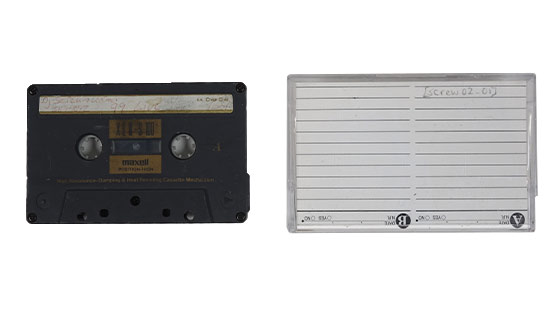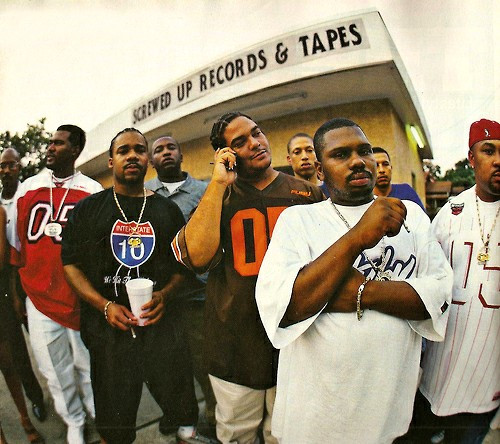
A Brief Biography Robert Earl Davis Jr., better known as DJ Screw, was responsible for pioneering the “chopped and screwed” tempo method (Fickman). He “screwed” music by slowing the tempo of two vinyl records to half its speed or less (Esparza). Afterward, he would “cut up” the songs and “stitch it back together” to repeat particular beats and words of interest (“DJ Screw Mixtape”). Often, he would also include his own rap or feature some of his rapper friends on his mixes. Through these techniques, DJ Screw was able to create a brand-new sound that would dramatically impact the rap and hip-hop scene in Houston (and beyond). Unfortunately, the musician’s career was cut short due to a Lean overdose; he died on November 16, 2000, at the young age of 29–right at his peak (Esparza; Fickman).
Listening examples (spotify playlist)
Artifact 1: DJ Screw Mixtape

Because of DJ Screw’s talent and enchanting technique, he was often commissioned by individuals far and wide to create a special mixtape. To make these tapes, patrons would provide a specific list of songs they wanted “chopped and screwed” by the pioneer (“DJ Screw Mixtape”).

DJ Screw would then recruit his friends and other local rappers to freestyle on his screw tapes (Esparza; Fickman). These men became known as the Screwed Up Click (Esparza; Fickman; “Screwed Up Click”). Original members of S.U.C. included Big Pokey, Fat Pat, Big Hawk, Big Pokey, and Lil’ Keke, among several others (“Screwed Up Click”). The establishment and popularity of this hip-hop collective helped enhance and/or launch the artists’ solo endeavors.
Throughout his career, DJ Screw recorded more than 300 custom mixtapes for his friends (Fickman), and an even larger figure is presented when looking at fan sales.
Artifacts 2 & 3: DJ Screw’s Home Studio

This interview with DJ Screw aired on ABC 13 in Houston in 1998. The interview showcases DJ Screw in his home studio doing what he does best: chopping and screwing music. When he was first producing these screw tapes, he was doing so straight from his house on Greenstone Street. There was an immense demand for these one-of-a-kind mixes. In the interview, Screw states that when “people got to listen to [his music] and feel it, it jumped off.” Fickman states that in the mid-to-late 1990s, cars lined up outside DJ Screw’s house to obtain these cassette tapes. It is estimated that 10,000-15,000 copies were sold on any given day (Fickman). Screw asserts that he “ain’t know that it was going to get this big.”
Artifacts 3 & 4: DJ Screw and Screwed Up Records & Tapes

DJ Screw was selling hundreds of thousands of these screw tapes to his eager fans (“DJ Screw Mixtape”). Because selling outside his home was becoming impractical, he opened up his own shop in 1998 called Screwed Up Records & Tapes to meet this demand. The first video clip comes from the 2000 movie The Dirty Third, which showcases DJ Screw at his store. In his interview with Bun B (the second video clip), he equates Screwed Up Records & Tapes to an “underground radio station,” calling his store “the home of screw Texas.”
Bibliography
“DJ Screw and his Record Collection.” University of Houston, https://exhibits.lib.uh.edu/s/exhibits/item/20590. Accessed 27 Mar. 2023.
“DJ Screw Mixtape.” Bullock Museum, https://www.thestoryoftexas.com/discover/artifacts/dj-screw-mixtape. Accessed 22 Mar. 2023.
Esparza, Jesse J. “Davis, Robert Earl, Jr. [DJ Screw].” Handbook of Texas Online, 20 July 2020, https://www.tshaonline.org/handbook/entries/davis-robert-earl-jr-dj-screw. Accessed 27 Mar. 2023.
Fickman, Laurie. “Keeping DJ Screw’s Memory Alive.” University of Houston, 2019, stories.uh.edu/dj-screw/index.html. Accessed 27 Mar. 2023.
“Screwed
